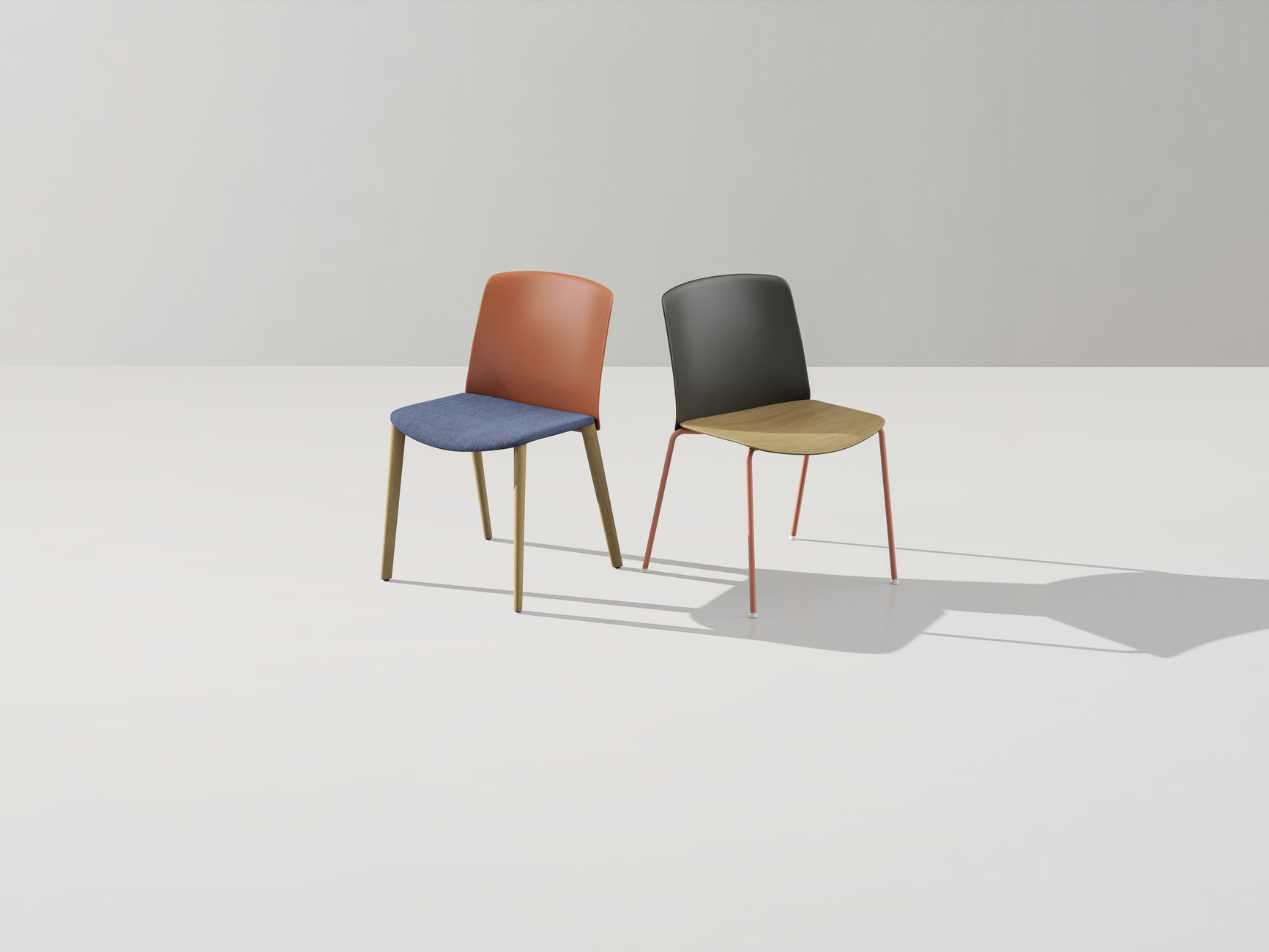Knowing what is in demand
Anna Moldenhauer: Daniel, how did the idea for "Mixu" come about in cooperation with Arper?
Daniel Stromborg: The project began with research for a new chair, in this case a plastic chair. However, we quickly abandoned this idea because we found through our research that there was a different need on the market. Our research leveraged the 6,000 or so designers we have by asking 35 Design Directors at Gensler, from London to Tokyo, what they and their clients currently expect from a chair and the answer was: individualization. We then worked on giving the users of "Mixu" a platform that not only allowed, but also embraced customization in order to give designers authorship of their spaces. The three-part system of seat, backrest and base can be personalized with a wide range of colour and texture combinations. A "mix and match" construction kit, so to speak, that gives designers and architects the opportunity to adapt the product for their projects. I think that's what design in general should be about: identifying the real need for products and designing accordingly.
What else was decisive for the team when designing "Mixu"?
Daniel Stromborg: Another important point was to make the offering as sustainable as possible. We used post-industrial recycled plastic, 100 percent recyclable plastics, recycled steel, leather, fabric and FSC-certified wood. Adhesives, staples and environmentally harmful binders were out of the question. All components can be replaced without much effort, which is good for the chair's longevity. Basically, we developed "Mixu" in reverse in terms of its construction, which was a completely different approach than before. That goes for both how we designed it and how it’s shipped. The chair is delivered disassembled to reduce the dead air during shipping, reducing it’s footprint. With the Gensler Cities Climate Challenge (GC3), Gensler has committed to making all projects carbon neutral by 2030, so offering products to the design community that support this initiative is important, as you can see in the design of Arper’s "Mixu.”
The shape of "Mixu" is very clear and restrained, what was the idea behind it?
Daniel Stromborg: Part of the form finding was working within the design language of Arper. It is very clear what is an Arper product and what isn’t. As designers, I believe it’s our role to create something that works well within the brand’s ecosystem. We dove headfirst into the vernacular of form that defined what an Arper product is, and you can see that translated in every design decision we made. There is a thread that ties all of Arper’s products together, something we referred to as “perfectly imperfect,” and that provided the baseline for the silhouette of the chair. The shapes and formal relationships all have a bit of humanistic quality - it is not too overbearing but still offers recognition.
Before joining Gensler, you briefly studied interior design and worked both as an independent designer and in Don Chadwick's studio, how does this training influence your design today?
Daniel Stromborg: I have been incredibly fortunate in my career path to have plenty of opportunities to try out a lot of different paths in design. I think I was able to crystallize which aspects are important to me. As a designer, I think it’s important to understand design on a holistic level, not just myopically as you would if you stick to a specific silo of design. It’s all related – type, form, space, light and sound. My time with Don Chadwick had a big influence on me because he doesn’t follow the prescribed paths in his work; he works very experimentally. Don likes to think of his studio as a lab, and his quest for innovation was incredibly inspiring.
You work in Los Angeles and generally in the USA, but at the same time you travel a lot to projects in Europe. What differences in your understanding of design do you notice?
Daniel Stromborg: It varies depending on the region, even within the USA. I was just speaking to someone recently about how designers on the West Coast, for example, seem to be drawn to lighter materials and historically have been very open to creative experiments. But what I would generally say, and perhaps due to the pandemic, is there is a desire for design that is fun. I think there is a newfound sense of optimism that has surfaced after these 18 months or so of being alone—and this is being reflected in design. Given the apparently radical shifts in our climate right now, I also think that the entire design community is seeking truly sustainable products.


















